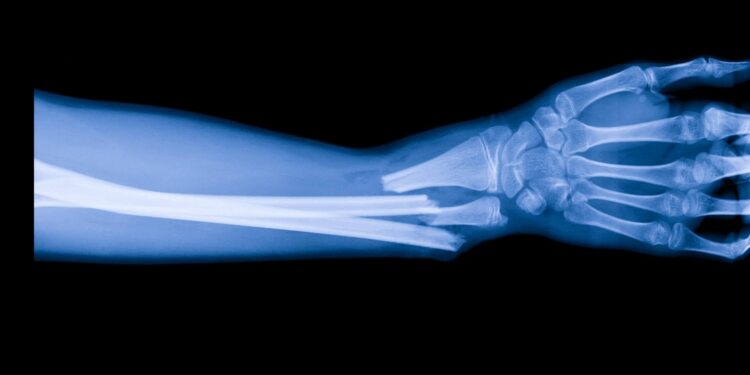A portable 3D-printing device that applies synthetic bone grafts directly onto injuries has shown promise in animal studies, potentially cutting down the time and cost of conventional procedures.
The tool, developed by researchers in South Korea, works much like a modified hot glue gun. Instead of glue sticks, it uses a specially designed “bioink” that can be printed directly onto broken bones. The results were reported September 5 in Device following tests on rabbits.
“Our aim was to create a system simple enough for clinical use without requiring lengthy preparation,” said Jung Seung Lee, a biomedical engineer at Sungkyunkwan University in Seoul. “This method eliminates the need for preoperative imaging, measurements, and fabrication, which can delay surgeries by days.”
How the bioink works
The bioink is made from hydroxyapatite, a compound that stimulates bone regeneration, and polycaprolactone (PCL), a biocompatible plastic already approved by the U.S. Food and Drug Administration. PCL serves as a scaffold for new bone tissue and gradually degrades in the body over several months, allowing natural bone to replace it over time.
Researchers can adjust the balance of these two compounds to control strength, stiffness, and other properties depending on clinical needs. Antibiotics can also be added to help prevent infections after surgery.
Adapting the printer for medical use
Standard glue guns operate at dangerously high temperatures, so the team redesigned their prototype to limit heat and give surgeons more control over direction, depth, and angle. Because PCL melts at relatively low temperatures, the bioink can be printed at about 60°C and safely cools to body temperature in under a minute. The entire grafting process takes only a few minutes.
Why it matters
Traditional 3D-printed bone grafts require CT scans, custom designs, and fabrication, delaying treatment. This new method allows surgeons to create and apply grafts on the spot, potentially making bone repair faster and more accessible.
While still in early stages, the handheld bone printer could transform how fractures and bone defects are treated if future trials in humans prove successful.

































